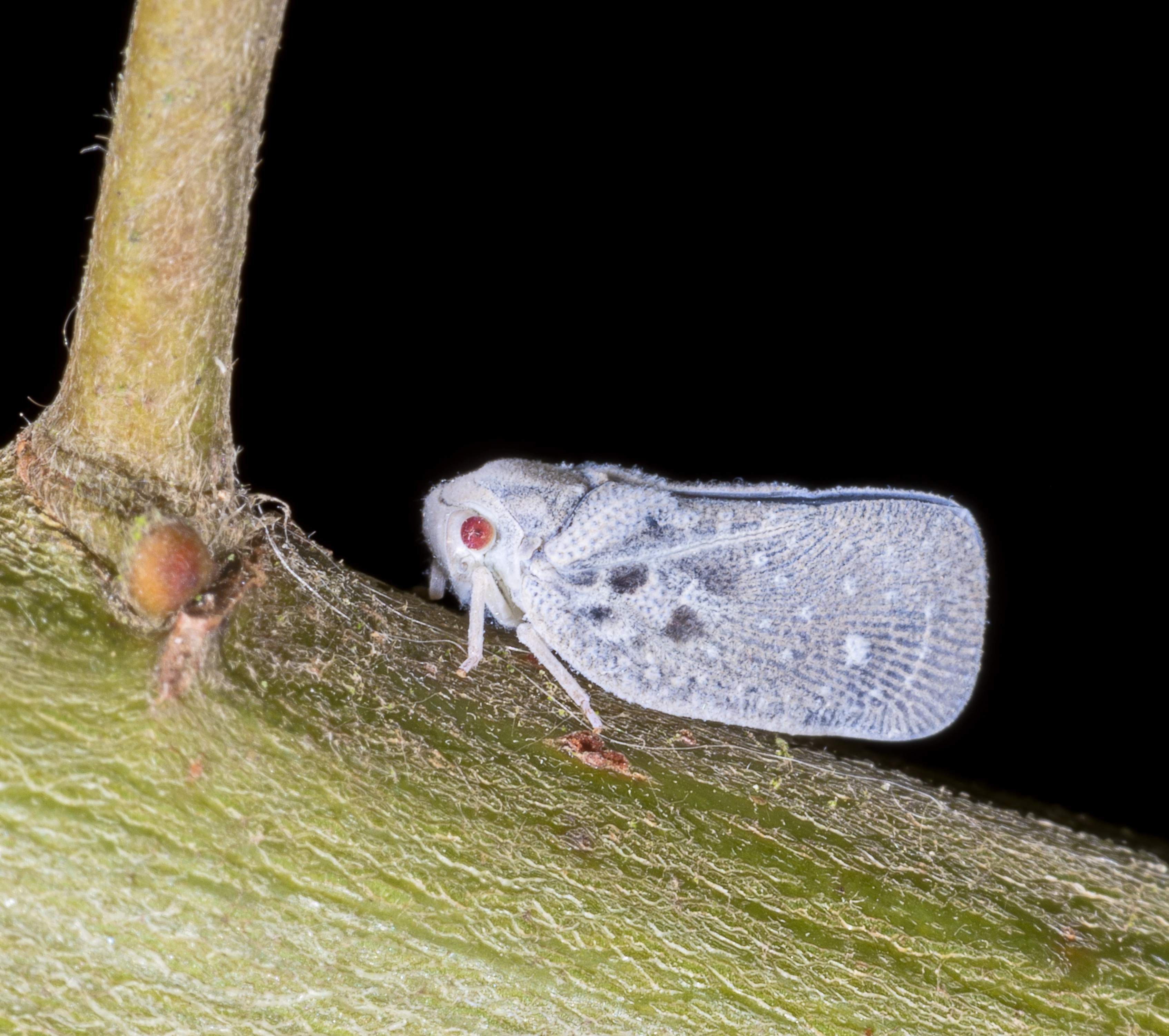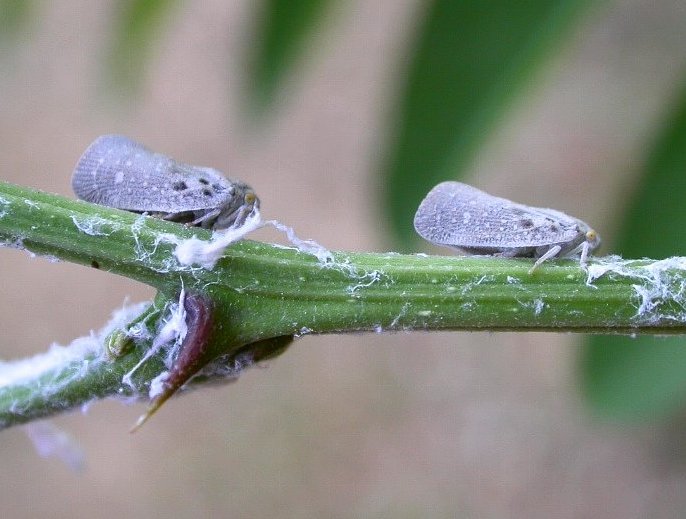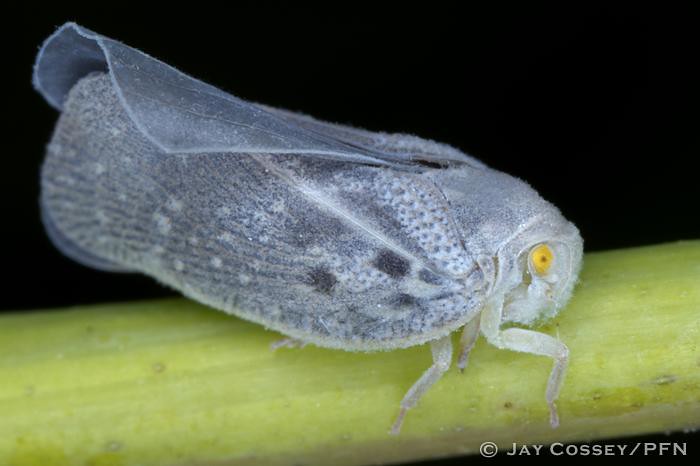Metcalfa pruinosa
Bläulingszikaden ( Metcalfa pruinosa )
The Bläulingszikade ( Metcalfa pruinosa ) is a cicada within the family of butterfly cicadas ( Flatidae ). In Europe enters a native of North America as a way to neozoon.
Features
The adult Bläulingszikade reaches a body length of 5-8 mm and 2-3 mm wide. She has broad triangular forewings that holds them vertically close to the body, which gives it a wedge-shaped, laterally squeezed appearance. The front wings have well-developed, transversely veined Costalzellen. The posterior tibiae usually have two lateral spines in addition to those at the apex.
The color varies from whitish and gray to dark gray, depending on how much the cicada with bluish white wax particles is covered. In the Basalregionen the forewing are characteristic dark spots couples.
The nymphs are fully grown to 4 mm long and less than twice as long as wide. They have distinct stub wings and the rear end of the abdomen conspicuous tufts of white wax threads. The color varies from whitish and light green.
Dissemination
Because of their origin from North America - there flatid planthopper known as Citrus - the Bläulingszikade is also known as American cicada. It prefers mixed forests, open bushland and similar habitats. Its distribution area stretches along the North American east coast of Ontario and Quebec to Florida, west to the Great Plains. In the southwest, it is found in Texas, New Mexico, Arizona, California and Mexico. In Cuba, the subspecies Metcalfa pruinosa cubana ( Metcalf & Bruner ) will be widespread.
In the late 1970s, the Bläulingszikade came on plant imports to southern Europe. It was first found in 1979 in Veneto in Italy. Since then it has established itself firmly in central and northern Italy and southern France. Except in the neighboring countries of Italy, Slovenia, Croatia and Switzerland it spread to Spain, Hungary, Serbia, Montenegro, Bulgaria, Greece and Turkey. In 2001 she was first detected in the Czech Republic, regarded there but, as in Great Britain, as wiped out again. In Austria, a mass occurrence in the area surrounding Vienna was, after a single find in Graz in 1996, in July 2003 found.
Way of life
The Bläulingszikade developed one generation per year. After wintering in the egg stage, the larvae hatch in the corresponding outside temperatures depending on the region from March to June. Your excellent jumping ability distinguishes them from the wax also wool -producing larvae of wool or scale insects, which frequently occur on the same plant. After five instars hatch adult cicadas. These mate and begin laying eggs. The female lays the eggs between late summer and late autumn from its short ovipositor in corked bark sections or lenticels of various trees or shrubs.
The Bläulingszikade feeds extremely polyphagous. In Austria alone, it was found at 290 different plants. To their wide food range includes both crops, such as various citrus plants, fruits, vines, sunflowers, corn or soy as well as many herbaceous and woody wild plants.
Harmful effects and benefits
By sucking plant juices from the Bläulingszikaden rarely economic damage to healthy host plants cause. Transmission of viruses or phytoplasmas has not been determined, a connection with certain diseases occurring in North America in grapevine ( Grapevine yellows disease) but suspected. In extreme cases it may cause problems of plant growth and fruit formation. Larger Problems are excreted by the animals honeydew on which sooty mold settles, through which the host plants are contaminated. The remaining on the plants shed skin and wool wax, an optical interference particularly in ornamental plants.
The Bläulingszikade is chemically fought in the orchards and vineyards of southern Europe in particular. As the animals but large amounts of honeydew produce, which is received by honey bees and other insects, this can lead to damage of bees and impairment of the quality of honey. Metcalfahonig from the honeydew of Bläulingszikade is now in southern Europe, especially in Italy, Slovenia and France come to great economic importance.








